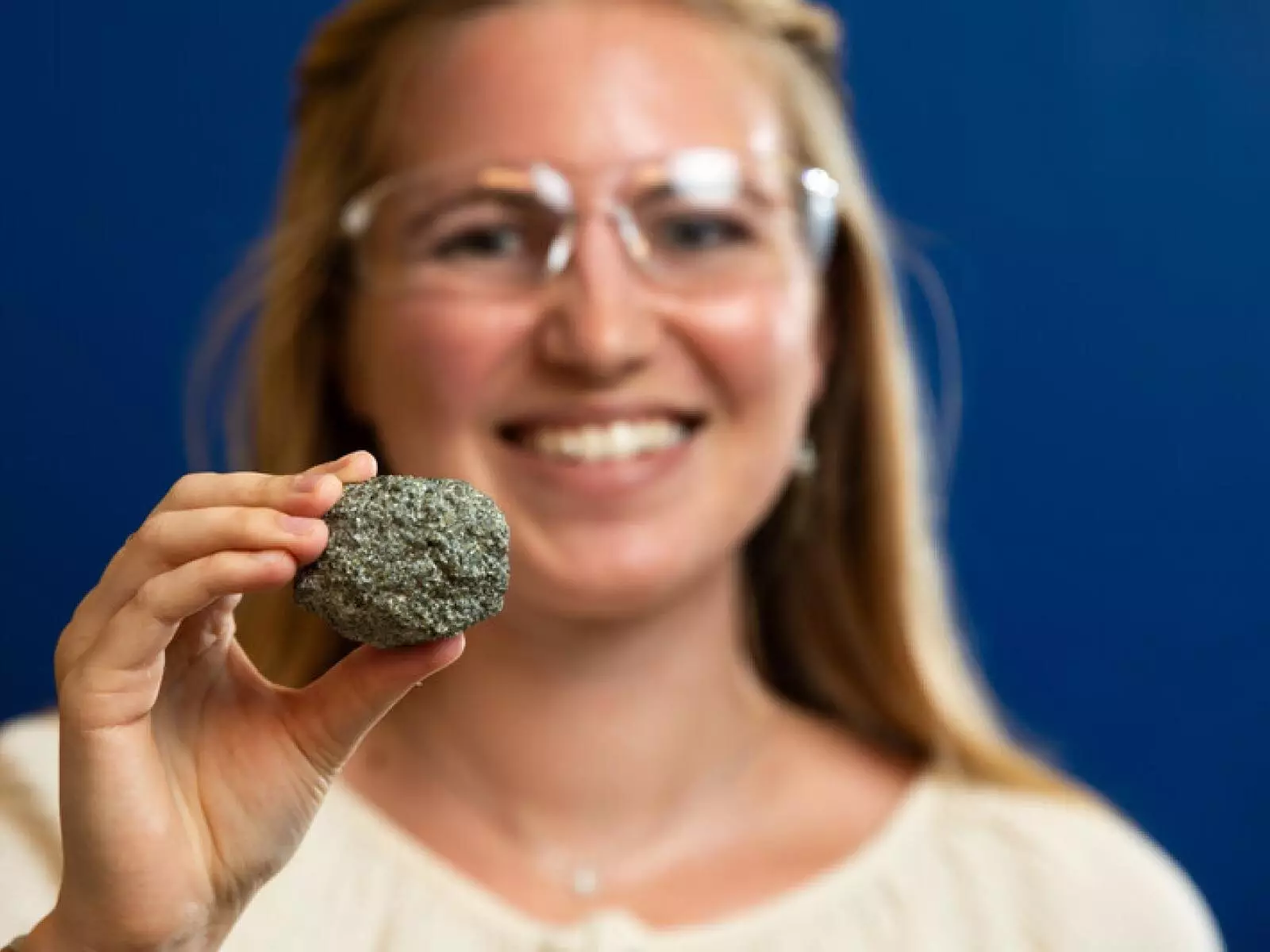In the face of escalating climate crises driven by carbon emissions, the global community urgently seeks solutions that cut through the haze of uncertainty surrounding climate change. While strategies such as renewable energy adoption and carbon offset initiatives are prevalent, innovations in carbon capture present a crucial, yet often underappreciated avenue. One particularly exciting development is the pioneering work by scientists at the Pacific Northwest National Laboratory (PNNL) that reveals a groundbreaking method for transforming carbon dioxide (CO2) into solid mineral rock. This innovative technique mimics natural geological processes but accelerates them at astonishing speeds, achieving what once took millennia in just a matter of months.
The Power of Carbon Mineralization
The method, known as carbon mineralization, has significant implications for climate management. By converting harmful CO2 emissions into stable mineral forms, we can essentially ‘lock away’ the gas in a form that is both secure and inert. This capability is vital in an era where the U.S. alone emits over 6,300 million metric tons of CO2 yearly.
However, while the science behind carbon mineralization demonstrates promise, we must grapple with the complexities of scaling this technology. PNNL Chief Chemist Todd Schaef emphasizes that it’s not enough just to develop the process; we also need robust systems in place to measure and confirm that the mineralization is effective and permanent. The ability to track and account for CO2 stored underground is paramount to ensuring environmental safety and fostering public trust in carbon management initiatives.
Microscopic Advances: The Role of Innovative Measurement Techniques
A pivotal element of this technological advancement comes from a collaboration between seasoned scientists and enthusiastic young researchers, highlighted by the work of Madeline Bartels, a Yale University intern at PNNL. Her groundbreaking research published in the journal Analytical Chemistry allowed for the quantification of carbon mineral molecules at previously unattainable scales—less than 100 parts per million. To put this into perspective, if one part per million were represented by a playing card on a football field, the challenge of measurement resembles identifying that card from the bleachers. Thanks to Bartels’ efforts, researchers are now able to view the game up close, accurately gauging precisely how much carbon we are securing in solid rock.
This high precision is largely achieved through the thermogravimetric analysis mass spectrometry (TGA-MS) technique. By analyzing rock samples ground to a fine powder, researchers heat these samples and capture the released gases, linking specific weight changes to the amount of identifiable carbon minerals. Through this advanced technology, the PNNL team successfully detected carbon minerals at an unprecedented scale of 48 parts per million, allowing for a calibration curve that directly correlates weight changes to CO2 locked in mineral form.
Bridging the Gap to Commercialization
Despite the immense potential of carbon mineralization technology, the challenge remains: translating laboratory success into large-scale, commercially viable solutions. The regulatory landscape surrounding CO2 injections for mineralization must evolve to facilitate broader deployment. As Quin Miller, co-author of the research and Bartels’s mentor, notes, concerted efforts among the government, industry, and community stakeholders are essential in establishing standards for sustainable and safe CO2 storage.
While the PNNL’s pilot demonstration in 2013 at the Wallula Basalt site revealed promising results—evidence of CO2 converted into solid minerals after just 22 months—there have so far been no commercial-scale projects in the United States. Streamlining the permitting process for CO2 injections is critical for future efforts. With the right tools and regulations, the technology could transform the way we handle carbon emissions and drastically lessen their impact on climate change.
The Next Generation of Researchers and Innovators
Investment in the next generation of scientists is integral to advancing carbon management solutions. Bartels’s participation in the SULI internship program not only enabled her to witness the intricacies of this pioneering research up close but has also positioned her as a promising contributor to the ongoing quest for effective climate solutions. Her story epitomizes the potential impact of bridging academic research with hands-on experience in national laboratories.
As more students like Bartels engage in foundational research, they expand the pool of ideas, perspectives, and methods necessary to scale carbon mineralization techniques. The vibrant collaboration encouraged by PNNL lays the groundwork for a diverse team equipped to develop innovative solutions for one of the planet’s most pressing issues. The journey to a sustainable future will undoubtedly require such fresh minds, armed with scientific prowess and creative problem-solving skills.

